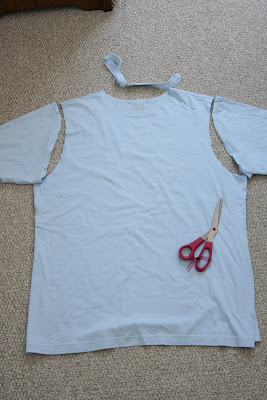When it comes to reviving old clothing, several people have asked me the same two questions:
1. "How do you do it?" I usually take the garment apart, and then sew it back together, making a few adjustments along the way. Hopefully the photo tutorial below will give you a better idea of what goes on during the transformation. However, if you really want to get into sewing, I suggest buying a
simple pattern of something you would like to make. (SIMPLE is key word here.) Also, be sure to buy cheap fabric, have really low expectations of how it will turn out and take your time making it. The first and only pattern I have ever bought (and highly recommend) was
this one. A Simplicity "Built By Wendy" shirt and dress pattern. With it, I made the shirt I blogged about
here. By using a pattern, you will get used to how the various fabric pieces fit together to make the final garment. You will also familiarize yourself with some different sewing techniques.
2. "What do you look for?" This is tough to answer because when I go to the thrift store, I am typically not looking for anything in particular. Most of the time things just jump out at me. I would say look for things in colors and fabrics you like. (Note: stretchy fabrics are easier to work with.)
With the men's shirts, I look for large sizes (XL or XXL) in softer cottons and solid colors (a budweiser logo in the middle of the shirt doesn't do much for me). The bigger the shirt, the more material you will have to work with. I have found that sewing, in general, always takes more fabric than you think you will need. Extra fabric is also useful for any embellishments you want to add, like a ruffle, a bow or a fabric flower.
When you are looking for dresses to revive, once again look for patterns, colors and fabrics you like and are flattering on you. Then envision the dress in a smaller size, with shorter sleeves and a shorter hem, perhaps. If you like what you see then go for it! For dresses, I usally always have a basic idea of what I'm going to do to change the dress before I buy it. You can always change your mind and fine tune it as you go along but a basic idea is helpful. The best thing about sewing projects from the thrift store is the cost! If it doesn't work out, you're only out $3 and a few hours of your time.












































